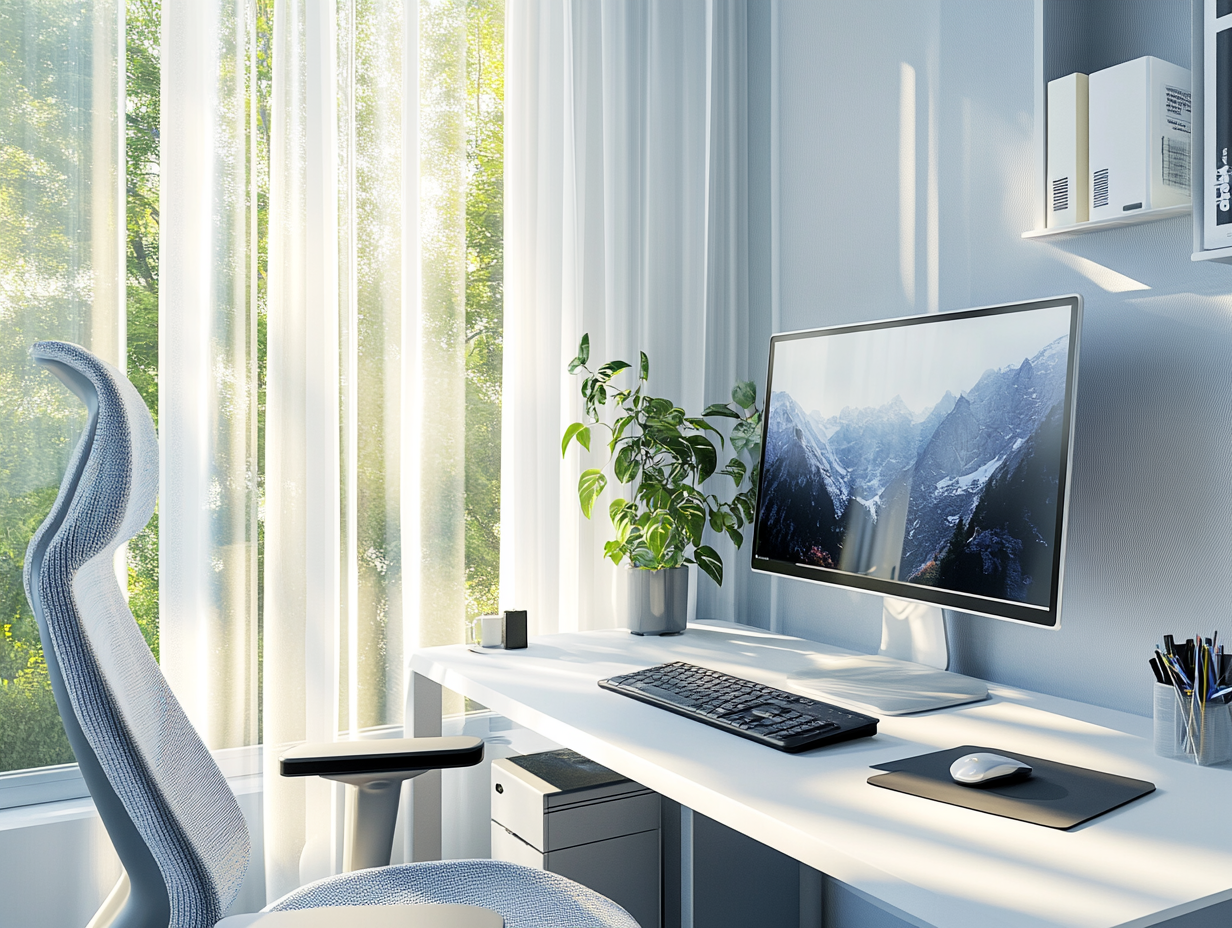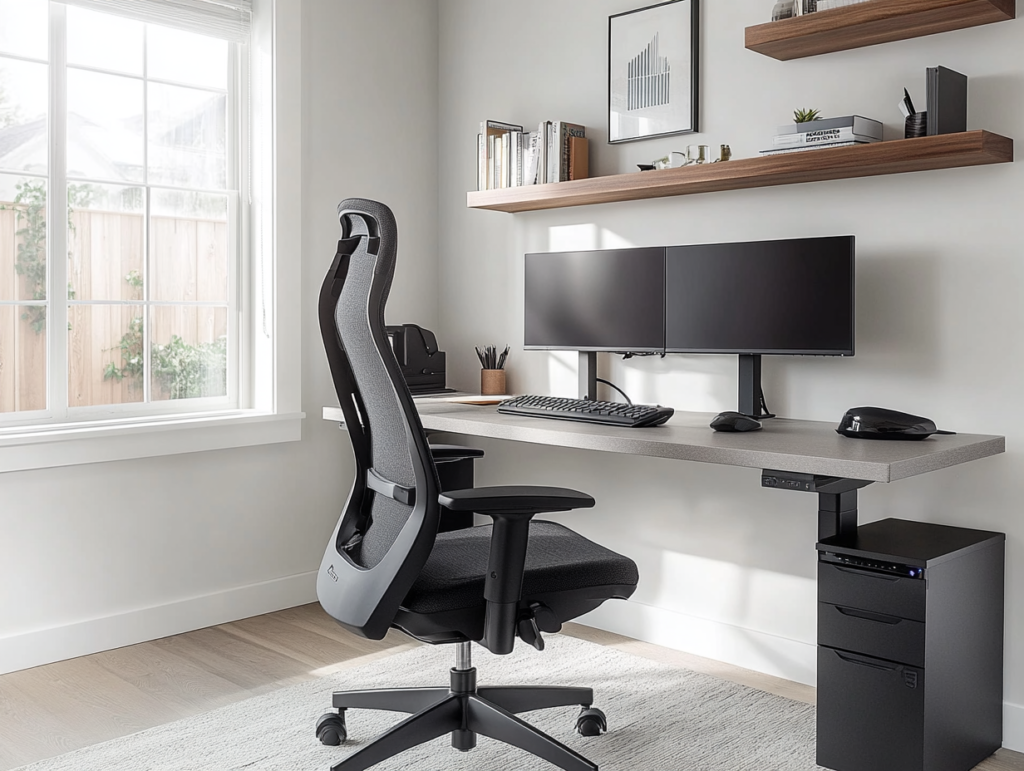Designing the perfect home office isn’t only about finding the right desk or chair. It’s about building an environment that supports focus, energy, and mental clarity throughout your workday. While ergonomic furniture and organization are often top of mind, natural light is a silent powerhouse in the productivity equation.
In a world of screens and artificial lighting, the gentle glow of sunlight can have a transformative effect. It improves mood, reduces fatigue, and supports healthier work rhythms. When strategically paired with ergonomic choices and intentional design, it becomes one of the most effective tools for boosting performance in a home-based workspace.
In this article, we’ll take a closer look at:
- How natural light impacts cognitive function and emotional wellness
- Smart ways to incorporate more daylight into your workspace
- Tips for balancing light and comfort with ergonomic setups
- Small-space design solutions that maximize both function and brightness
The Science Behind Sunlight and Productivity
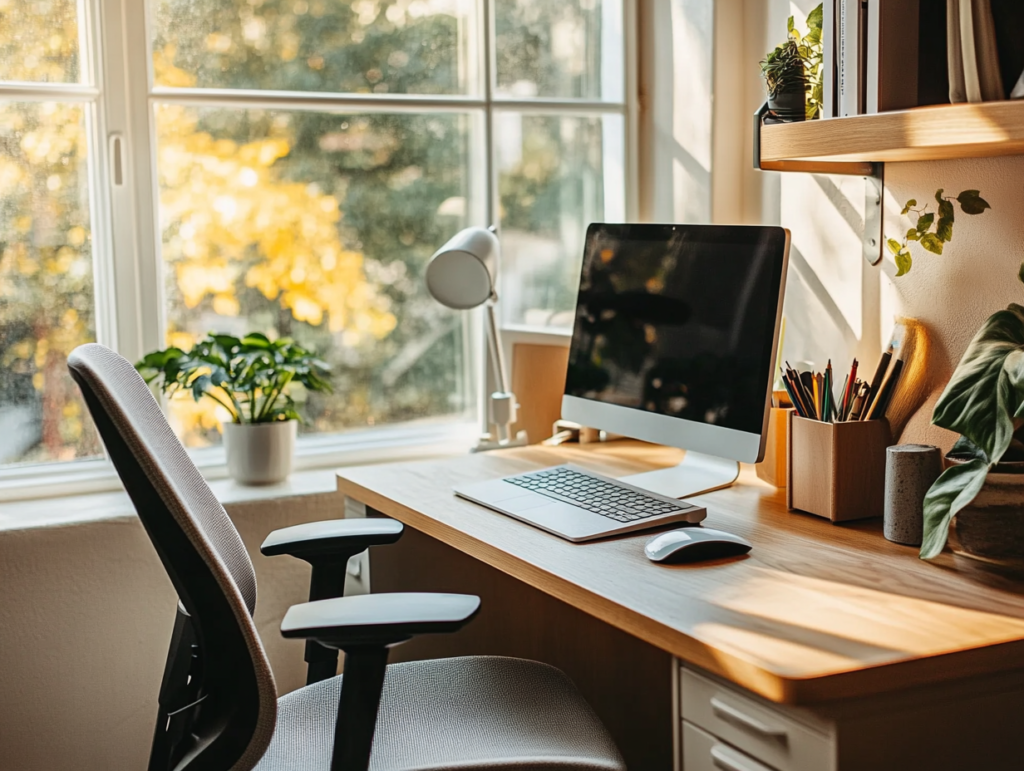
How Sunlight Affects the Brain
Natural light does more than help you see clearly—it helps your brain function better. When you’re exposed to daylight, your body produces serotonin, a neurotransmitter that boosts mood and focus. More serotonin typically means a more positive mindset and sharper cognitive performance—essential ingredients for a productive workday.
Sunlight also regulates the production of melatonin, the hormone responsible for managing your sleep-wake cycle. Better light exposure during the day = better rest at night = clearer thinking and higher energy levels during the day. It’s all connected.
Natural Light and the Circadian Rhythm
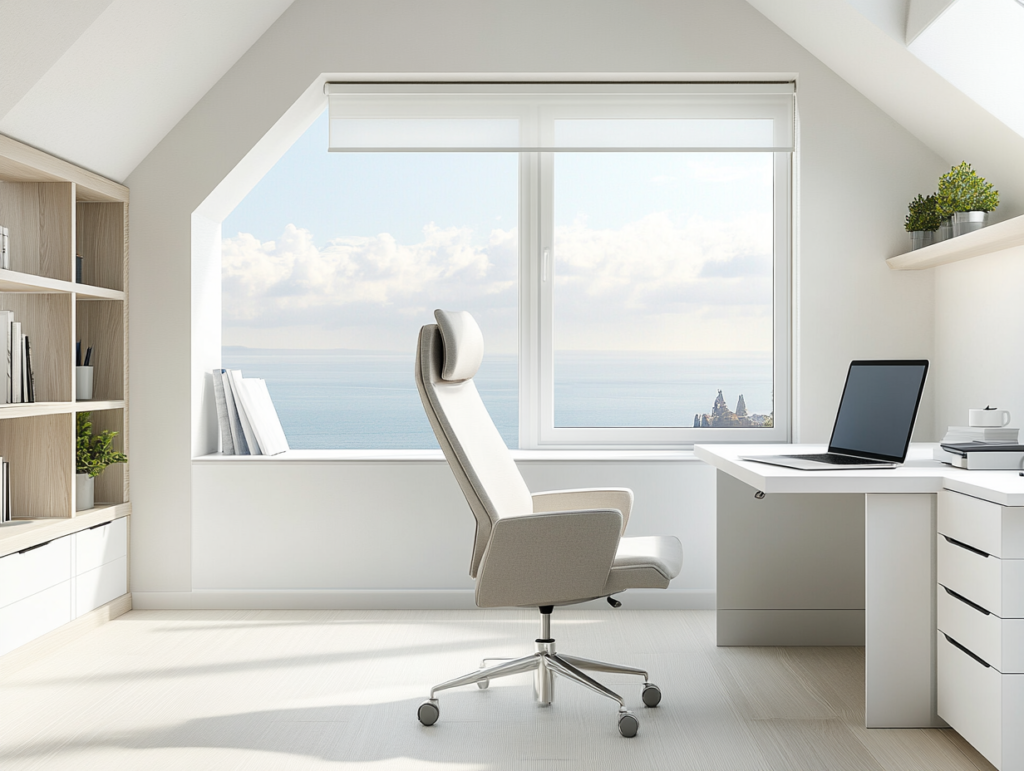
Your circadian rhythm is like your body’s internal timekeeper. It tells you when to feel sleepy, when to be alert, and when your body needs recovery. Exposure to morning sunlight helps align this rhythm, making it easier to fall asleep at night and wake up refreshed.
When your circadian rhythm is off—often due to excessive artificial light exposure—it can lead to grogginess, brain fog, and irritability. Adding more natural light to your workspace can bring your rhythm back in balance.
Reduced Eye Strain and Fatigue
Ever finish a day under fluorescent lighting with a headache? That’s not your imagination. Poor lighting leads to eye strain, blurred vision, and mental fatigue. Natural daylight, on the other hand, creates softer, more evenly distributed illumination, reducing visual stress and helping you stay focused longer.
Designing with Daylight in Mind
Smart Desk Positioning
The placement of your desk is one of the easiest and most impactful ways to incorporate natural light. Whenever possible, position your desk perpendicular to a window—this reduces glare on your screen while allowing light to spill across your workspace.
If your only option is a small window or one that doesn’t face direct sunlight, you can still make the most of it:
- Use sheer curtains to diffuse harsh light
- Keep windowsills clear to maximize brightness
- Consider lighter wall colors to reflect and spread light
Reflective Surfaces & Materials
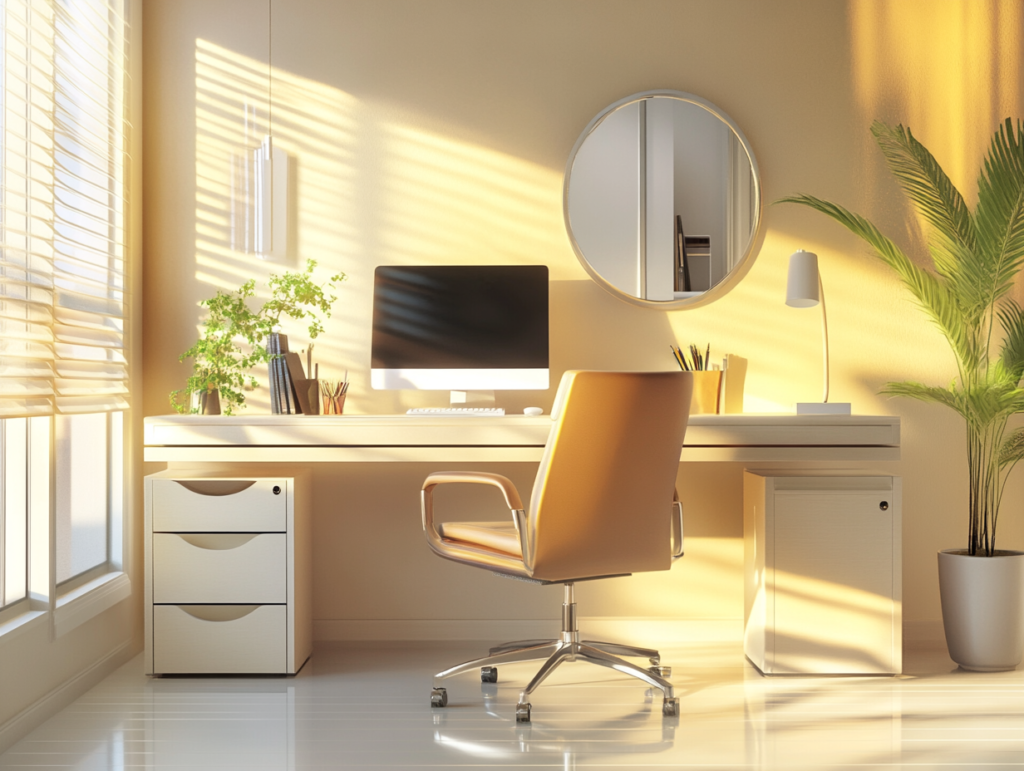
Mirrors and glossy finishes aren’t just aesthetic—they’re functional. A strategically placed mirror opposite a window can double the amount of sunlight bouncing into your room. You can also use:
- Glass furniture
- White or light-toned walls
- Chrome or brass accents
These surfaces help disperse natural light throughout the room, reducing the need for overhead lighting during the day.
Maximize Light Without the Glare
Working in bright natural light is ideal—unless it causes glare on your screen. Here are a few solutions:
- Use anti-glare screen filters
- Adjust your monitor angle to reduce reflections
- Add task lighting like a desk lamp for overcast days or focused tasks
Pairing Light with Ergonomics
The Power Combo: Natural Light + Good Posture
You’ve likely already incorporated ergonomic furniture into your home office—like a supportive chair, sit-stand desk, or footrest. But these elements become even more effective when paired with optimal lighting.
Proper lighting helps you maintain good posture by:
- Reducing slouching caused by squinting or leaning forward
- Encouraging better screen positioning (eye level with soft ambient light)
- Allowing you to shift comfortably between sitting and standing without strain
A Quick Refresher on Ergonomic Best Practices
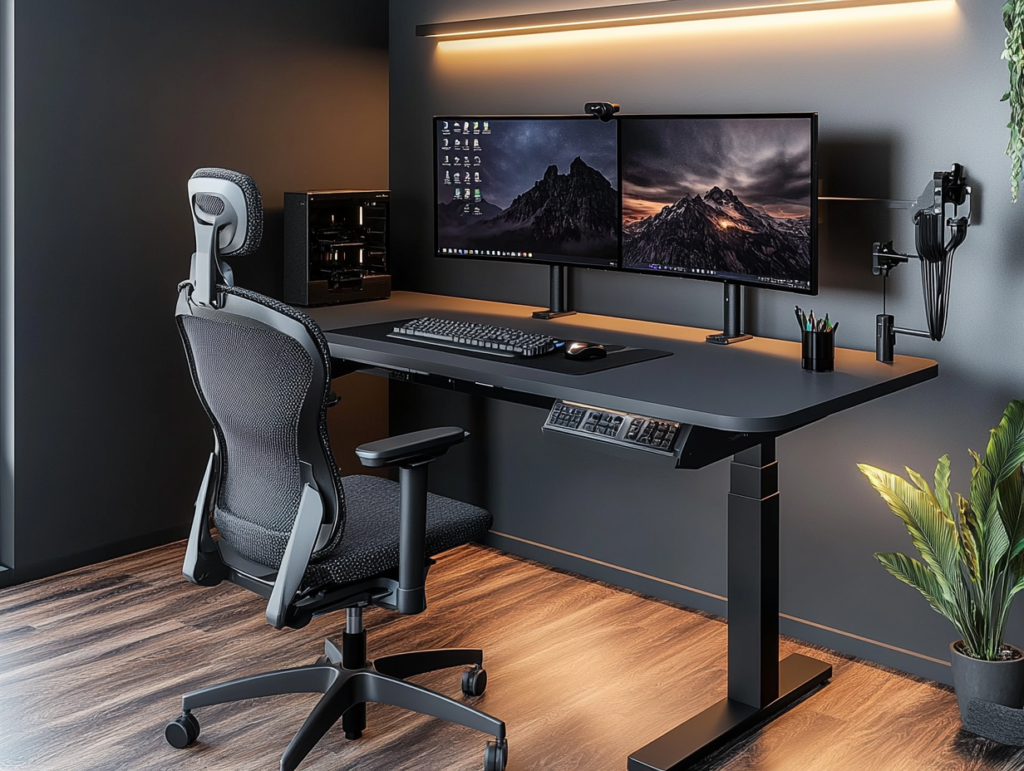
Even if you’ve nailed this setup, here’s a gentle reminder:
- Chair: Adjustable, with lumbar and neck support
- Desk: Large enough for your tasks, ideally height-adjustable
- Monitor: At eye level, about 20–30 inches away
- Accessories: Keyboard tray, wrist support, and footrest for optimal posture
Natural light can actually encourage movement—if your space is bright and inviting, you’re more likely to stand up, stretch, or even relocate for a change of scenery.
Styling Your Space for Light and Function
Minimalist Design that Amplifies Light
Clutter not only distracts the mind—it blocks light. A minimalist home office embraces function-first thinking. That means:
- Fewer items on your desk
- Hidden storage
- Clean lines and visual breathing room
Minimalist decor also reflects more light. Choose light-toned woods, whites, beiges, or pastels to make the space feel open and energized.
Color Psychology Meets Natural Light
Natural light brings out the truest tones in color, so your palette matters. Here are a few combos that work beautifully:
- Blues & Greens: Calming and focus-enhancing
- Warm Neutrals: Creams, beiges, and soft grays for an airy feel
- Accents: A pop of yellow or orange can stimulate creativity
Small Spaces, Big Impact
Even a compact corner can be transformed with smart lighting and layout:
- Use floating shelves to free up floor space
- Choose a foldable or wall-mounted desk
- Place mirrors near windows to visually double the space
Remember: you don’t need a big room—just a bright one.
Let the Light In
Your home office should feel like a space where you can thrive—not just survive. By integrating natural light with your existing ergonomic setup and embracing modern, light-forward design, you can elevate the way you work every single day.
Small steps—like moving your desk, hanging a mirror, or simply opening the blinds—can spark big changes in your energy, focus, and creativity. When you design with intention, the benefits ripple into every aspect of your productivity and well-being.
Want a Visual Boost?
Here are a few image ideas to pair with this post:
- A sleek, white-toned workspace flooded with morning light.
- A side-view desk layout showing soft sunlight hitting the workspace.
- A small-space corner office with a mirror reflecting light.
- A minimal, neutral-toned office setup featuring ergonomic essentials.
- A room with a standing desk, tall windows, and biophilic decor.

